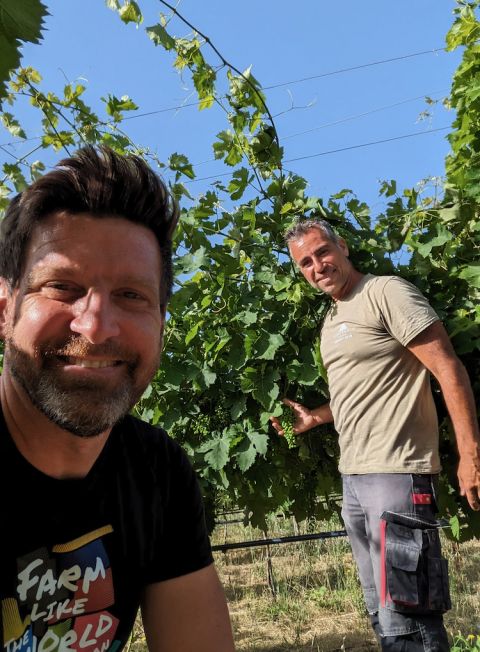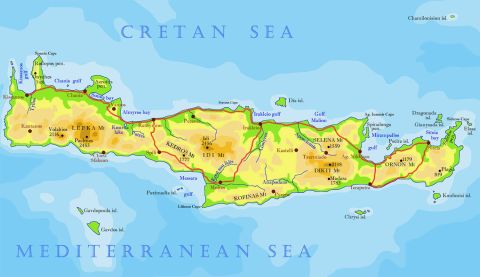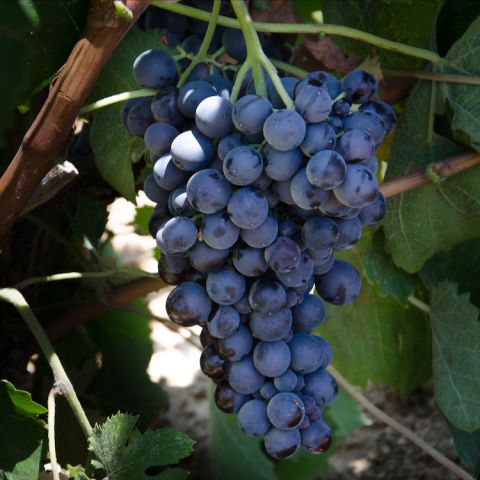It’s hard to believe how much time and effort goes into the making of this delicious and great-value wine, made from Crete’s very own red-wine variety Liatiko.
The colour of the wine is typical for the variety, bricky red even in youth. It has the seductively sweet aroma of Liatiko, with notes of fresh red fruits as well as dried cranberry and red cherry. The chalky/dusty tannins, sweet-sour red fruits and deep-seated freshness set this up as benchmark unoaked Liatiko: the complete opposite of an anodyne red that could come from anywhere. The alcohol is unobtrusive at 13.5%.
This could come from nowhere but Crete, where Lyrarakis have proved their mastery of Liatiko even if the easy drinkability of the wine belies the complex organisation involved in making it on an island with so many small-scale farmers, many of whom are in their 80s.
Bart Lyrarakis, CEO and one of five members of the second generation working in this family-owned business that was established by brothers Manolis and Sotiris in 1966 in Alagni, south of Heraklion, told me about the logistical challenge of sourcing the grapes for this wine from 138 vineyards owned by 66 farmers covering an area of 16.7 ha (41 acres), including the family’s own vines.
They see and advise these farmers throughout the year to help them improve their work in the vineyards, from the Sitia region in the east via Alagni in the centre to Amari in the Rethymnon region further west. I remember Bart looked slightly road-weary – but still smiling – when I visited Crete in July 2023, a year in which they had been fighting a constant battle with the downy mildew that devastated the island as well as other European vineyards last year.
But it’s during harvest that the odometer goes crazy and the mobile phone gets hot. Bart explained:
‘To give you an example, I think we organised four harvest days (hence, four pick-ups, four dispatches of crates and collection of crates), just for Amari, with our refrigerated truck. That means, just for one of the areas, 35 producers delivered fruit from 80 vineyards in four passes. Haha. Now that I read the numbers, I know why I never remember anything. My god. Thirty-five people calling me to ask when it’s their turn. You can imagine their agony the days preceding the harvest (why are they not coming to pick up my grapes first, when will I be able to harvest? The bees will eat all my grapes, they are too sweet!).
‘Now comes an extra layer of complexity: those four harvests from Rethymnon should ideally be combined with harvests of the same grape in different areas, because it is very probable some of their vineyards match the maturity and profile we want as well. Our “remote areas” team has a hard job in the harvest. It also means that we need to sample all those vineyards and do berry sensory on all of them so that we decide who goes where ... But we have also built up significant experience now, so we have learned and know what to expect and in which order, by keeping track of everything throughout the year, at the same time.’
The organisational challenge doesn’t end when the grapes reach the winery. To combine the fruit from the various regions and collections over a period of several weeks, they did five vinifications. The majority of the grapes (86%) were macerated gently for 6–8 days at 20–22 °C (68–72 °F), 14% of the grapes were whole-bunch fermented for 9 days at 25–29 °C (77–84 °F), and about half the fruit was fermented with ambient yeasts. The wines are naturally stabilised (unfined, no cold treatment) and vegan friendly.
Lyrarakis refer to this bottling as ‘Queen Liatiko’ to distinguish it from their more expensive single-vineyard Aggelis Liatiko, which is also excellent. The word Queen does not appear on the label but was a sort of nickname based on the label design that was inspired by archaeological evidence of ancient Cretan women’s dress – an acknowledgment of the importance of the island’s local varieties (there are several other Queens, eg Vidiano, Vilana, Kotsifali) but also a reflection of Crete’s matriarchal society.
This is a perfect introduction to Liatiko and the distinctive red wines of Crete.
Lyrararkis wines are imported into the UK by Thorman Hunt, and widely available in the US (contact Lyrarakis’s US market director Brandon Krebs if you need more local stockists than shown via the Wine-Searcher link below). You can also find it in Greece, the Netherlands, Belgium and France.
For tasting notes on many more wines from Crete, see our tasting notes database. For more detail about this wine, see Lyrarakis’s Message in a Bottle, which provides for each wine and vintage a report on the vineyards, the weather and even gives a timeline from the arrival of the grapes at the winery to bottling.
All photos courtesy of Lyrarakis.


















